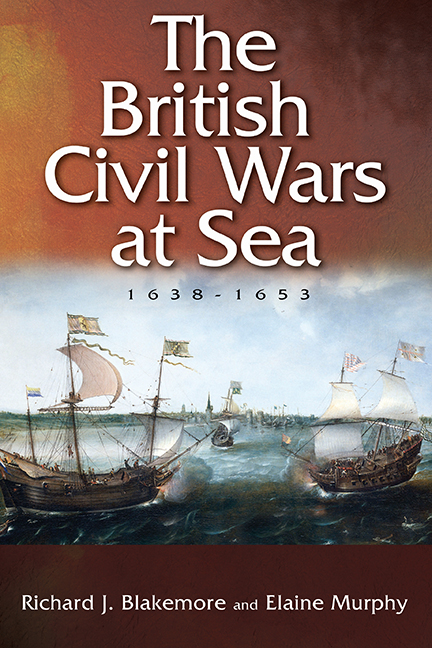Book contents
- Frontmatter
- Dedication
- Contents
- List of Illustrations
- Preface and Acknowledgements
- List of Abbreviations
- Map
- Introduction
- 1 Warfare at Sea in the Early Modern Period
- 2 The Outbreak of War, 1638–1642
- 3 The War at Sea, 1642–1646
- 4 Parliament's Navy, 1642–1646
- 5 Royalist, Confederate, and Scottish Naval Efforts, 1642–1653
- 6 Revolution, 1647–1649
- 7 Conquest, 1649–1653
- Conclusion
- Appendix 1 Timeline of the Civil Wars at Sea, 1638–1653
- Appendix 2 Parliamentarian Fleets, 1642–1649
- Bibliography
- General Index
- Index of Ships
7 - Conquest, 1649–1653
Published online by Cambridge University Press: 19 July 2019
- Frontmatter
- Dedication
- Contents
- List of Illustrations
- Preface and Acknowledgements
- List of Abbreviations
- Map
- Introduction
- 1 Warfare at Sea in the Early Modern Period
- 2 The Outbreak of War, 1638–1642
- 3 The War at Sea, 1642–1646
- 4 Parliament's Navy, 1642–1646
- 5 Royalist, Confederate, and Scottish Naval Efforts, 1642–1653
- 6 Revolution, 1647–1649
- 7 Conquest, 1649–1653
- Conclusion
- Appendix 1 Timeline of the Civil Wars at Sea, 1638–1653
- Appendix 2 Parliamentarian Fleets, 1642–1649
- Bibliography
- General Index
- Index of Ships
Summary
The execution of Charles I left parliament facing enemies at home and abroad in 1649. European monarchs, repulsed by the killing of the king, initially refused to recognise the new regime and some, such as the Tsar of Russia, broke off trade relations. Royalist forces opposed the Commonwealth in Ireland, Scotland, the Channel Islands, the Isle of Man, and in British colonies in the Americas such as Virginia and Barbados. This opposition posed a significant danger to the Commonwealth because of the considerable naval strength commanded by the late king's supporters, who now gave their allegiance to the prince of Wales, whom they proclaimed Charles II. Between 1649 and 1653 the navy became parliament's first line of defence in dealing with these overseas threats. As N. A. M. Rodger argued, it was ‘the fear and insecurity of a military dictatorship surrounded by enemies real and imagined which made England a first class naval power’. In order to understand how this came about, this chapter will examine the final years of the civil wars from a maritime perspective. In particular it will focus on the activities and pursuit of Prince Rupert's squadron, and the vital role the Commonwealth's navy played in supporting military campaigning in Ireland, Scotland, and further afield. The navy expanded and developed in this period because of the need to deal with the variety of threats faced by the Commonwealth. Its success ensured that as the civil wars ended the state possessed a substantial and capable naval force that could see off other maritime challenges.
Royalist resurgence at sea, February–December 1649
In 1649 the most pressing danger came from the royalist coalition in Ireland (the confederates had also chosen to support Charles II), which possessed substantial military and naval resources. During the first and second civil wars, confederate privateers had lacked the strength to successfully take on English men-of-war, but the arrival of Prince Rupert's fleet at Kinsale on 21 January added a new dimension to the naval war. The royalists now possessed a large squadron of men-of-war and privateers who could undertake operations against the English navy, but in order to achieve success at sea the royalist leadership in Ireland needed to devise a strategy to make best use of their newly acquired naval strength.
- Type
- Chapter
- Information
- The British Civil Wars at Sea, 1638–1653 , pp. 154 - 172Publisher: Boydell & BrewerPrint publication year: 2018

